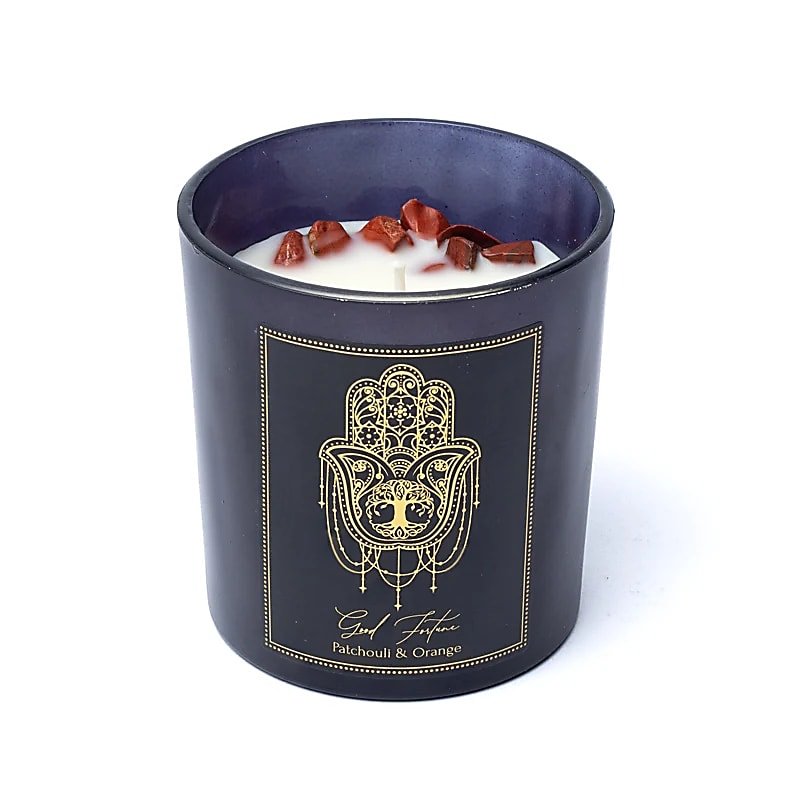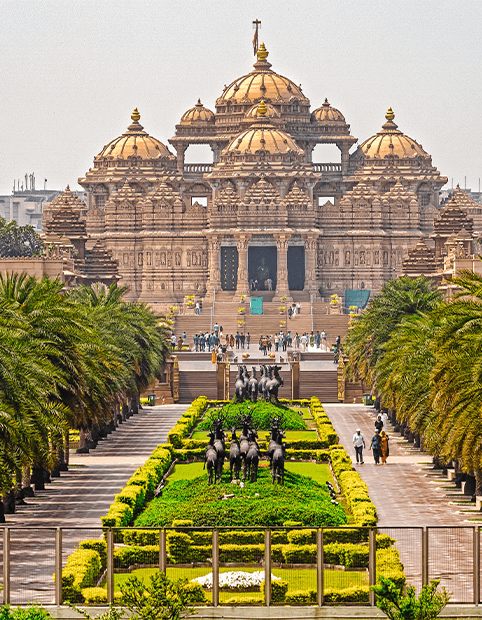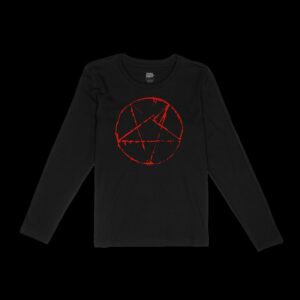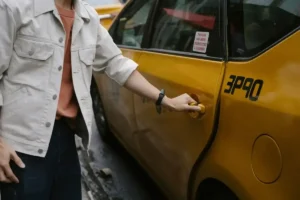Traditional Designer Wedding Sarees for the Best Bridal Look
A bride’s attire is more than just a fashion statement—it’s a symbol of tradition, elegance, and celebration. In Indian weddings, sarees hold a place of reverence and significance. Traditional designer wedding sarees are not only stunningly beautiful but also deeply rooted in cultural heritage. With intricate details, luxurious fabrics, and impeccable craftsmanship, these sarees elevate the bridal look to new heights. From regal Banarasi silks to elegant Kanjeevarams, every designer saree tells a unique story of style and legacy.
The Importance of Sarees in Indian Weddings
Sarees are a timeless representation of Indian femininity and grace. For centuries, brides across regions have adorned themselves in rich, handwoven sarees that reflect their cultural identity. A wedding saree isn’t just about the outfit—it embodies emotions, blessings, and the sanctity of the marriage ritual. In fact, in many communities, sarees are passed down through generations as family heirlooms, preserving memories and traditions.
Top Traditional Fabrics for Bridal Sarees
Banarasi Silk
One of the most sought-after fabrics for bridal sarees, Banarasi silk hails from Varanasi. Known for its luxurious texture and gold or silver zari work, it’s a favorite for North Indian brides. The heavy brocade and Mughal-inspired motifs make it ideal for weddings.
Kanjeevaram Silk
Originating from Tamil Nadu, Kanjeevaram sarees are synonymous with South Indian weddings. These sarees boast thick borders and contrasting colors. Woven from pure mulberry silk, they often feature traditional motifs like peacocks, temples, and checks.
Paithani Sarees
Native to Maharashtra, Paithani sarees are known for their vibrant colors and detailed pallu designs. The hallmark of a Paithani saree is its intricately woven peacock or lotus motifs using fine zari threads.
Chanderi and Maheshwari
These lightweight sarees from Madhya Pradesh are perfect for pre-wedding ceremonies. With sheer texture and minimalistic patterns, they bring a subtle sophistication to the bridal trousseau.
Tussar and Muga Silk
Ideal for brides seeking an earthy, rustic charm. These sarees are eco-friendly and feature natural golden tints, making them unique and elegant.
Design Elements That Define Bridal Sarees
Color Palette
Traditionally, red and maroon dominate Indian bridal wear, symbolizing prosperity and fertility. However, modern brides are experimenting with pastels, ivory, gold, and emerald green. The color choice often reflects personal taste, astrological beliefs, or regional customs.
Embroidery and Embellishments
Heavy zari, stonework, sequins, and bead embellishments are common in designer wedding sarees. Each stitch and thread is crafted to enhance the saree’s visual appeal while ensuring durability for heirloom use.
Motifs and Patterns
From paisleys and florals to mythological stories, motifs carry meaning. Temple borders, elephant prints, mango motifs, and geometric patterns are all traditional elements that define the cultural context of the saree.
Pallu and Border Work
The pallu, or decorative end of the saree, often showcases the most detailed artistry. It’s also the highlight when the saree is draped. Borders define the saree’s edges and bring balance to the overall design.
Modern Trends in Traditional Wedding Sarees
Fusion Styles
Today’s designers are blending traditional weaving techniques with contemporary cuts. Half-and-half sarees, jacket blouses, and layered drapes are becoming increasingly popular among younger brides.
Minimalist Embellishments
Not every bride wants a heavy saree. Minimalist embroidery with a focus on texture and silhouette is rising in demand. Lightweight yet impactful sarees are perfect for destination weddings and summer ceremonies.
Pastel Shades and Unconventional Colors
Lavender, mint green, powder blue, and soft peach have made their way into bridal fashion. These soothing shades offer a refreshing change from the conventional red or gold.
Personalization and Custom Embroidery
Many brides now choose to personalize their sarees. Whether it’s initials, wedding dates, or meaningful quotes stitched into the fabric, customization makes the saree even more special.
How to Choose the Perfect Designer Saree for Your Wedding
Know Your Body Type
Choose a fabric and draping style that flatters your figure. Heavier fabrics like Kanjeevaram suit hourglass and pear-shaped figures, while georgette or chiffon drapes well on petite frames.
Understand Your Wedding Theme
Your saree should reflect the overall theme and vibe of your wedding. A grand indoor ceremony may call for a more traditional, heavily embroidered saree, while a beach wedding might need a light and breathable fabric.
Comfort is Key
While looking stunning is essential, comfort should never be compromised. A saree that’s too heavy or restrictive can dampen the joy of your special day. Opt for quality fabrics and expert tailoring.
Choose the Right Blouse
The blouse completes the bridal look. Play with sleeve styles, necklines, and back designs. Heavily embroidered blouses can enhance a plain saree, and vice versa.
Accessorizing Your Bridal Saree
Jewelry Choices
Gold, diamonds, polki, and temple jewelry are timeless picks. Match your necklace with earrings, bangles, maang tikka, and waist belt. Avoid over-accessorizing; let your saree shine.
Footwear and Bags
Opt for comfortable yet elegant footwear. Embroidered juttis or heels work beautifully. Pair the look with a matching clutch or embroidered potli bag.
Hair and Makeup
Traditional sarees go best with classic hairstyles like buns, braids, or curls. Adorn your hair with fresh flowers or accessories. Go for dewy makeup with bold lips or a traditional kajal look.
Preserving Your Bridal Saree for the Future
A wedding saree is often worn just once but treasured forever. To preserve its charm:
- Always dry clean the saree after use.
- Store it in a breathable muslin or cotton bag.
- Refold the saree every few months to prevent permanent creases.
- Avoid using naphthalene balls directly; instead, place cloves or silica gel packets.
Where to Shop for Authentic Designer Wedding Sarees
Local Boutiques and Designers
Visit reputed bridal boutiques that specialize in handloom or regional sarees. Try on different options to see what suits you best. Many designers offer bespoke services, letting you personalize your bridal saree.
Online Platforms
Platforms like Carma Online, Kalki Fashion, Sabyasachi, Aza, and Pernia’s Pop-Up Shop feature a curated selection of designer sarees. Always check return policies and customer reviews before ordering.
Exhibitions and Fairs
Many cities host bridal expos and saree exhibitions. These events offer a chance to explore multiple designers and crafts under one roof, often with special discounts.
Conclusion: Celebrate Your Heritage in Style
Wearing a traditional designer wedding saree is a powerful way to honor your roots while embracing modern elegance. These sarees offer more than just aesthetic appeal—they carry cultural identity, emotion, and artistry. With endless styles, fabrics, and custom options, every bride can find the perfect saree that reflects her unique spirit. Walk down the aisle in a timeless piece that tells your story with pride, beauty, and grace.
Also Read : Fusion Fashion: How to Pair Begumpuri Handloom Sarees with Modern Outfits
FAQs About Traditional Designer Wedding Sarees
1. Which type of saree is best for a wedding?
Banarasi and Kanjeevaram sarees are the most popular choices for weddings due to their rich silk fabric and intricate zari work. They offer a royal, timeless appeal perfect for bridal wear.
2. How do I choose the right color for my bridal saree?
Traditional colors like red, maroon, and gold are always safe choices. However, pastel shades, ivory, and jewel tones like emerald or royal blue are trending for modern brides.
3. Can I wear a designer saree for a reception or only for the wedding ceremony?
Absolutely! Designer sarees are suitable for the wedding ceremony, reception, or even pre-wedding functions. Choose lighter fabrics for daytime or reception events and heavier ones for the wedding itself.
4. What accessories go well with a traditional bridal saree?
Gold or Kundan jewelry, embroidered potli bags, traditional bangles, hair flowers, and embellished footwear all complete the bridal saree look beautifully.
5. How should I store my wedding saree after the event?
Dry clean it first, then wrap it in a muslin or cotton cloth. Store it in a cool, dry place and refold it every few months to avoid permanent creases or fading.










